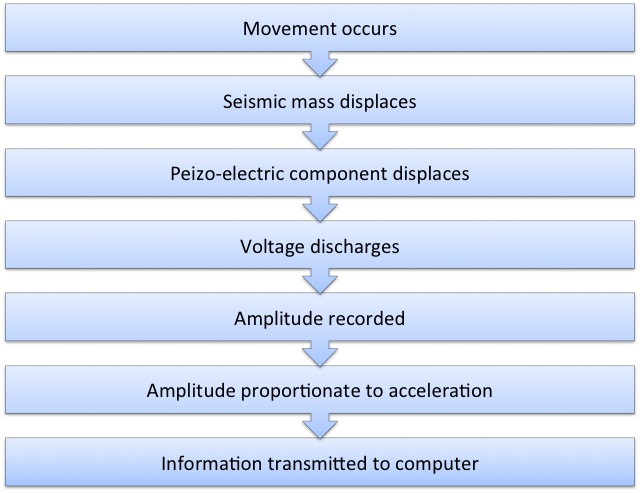Sport Innovation/Accelerometers in Running/Mechanism
MECHANISM
The simple way to understand how an accelerometer works is to imagine a mass connected to a spring, with the end of the spring connected within the case vertically. When the case moves downwards, the spring would compress. Conversely, when the case moves upwards, it stretches. The displacement of the spring, caused by the mass is measured and thus, acceleration along the vertical axis is obtained(see http://www.youtube.com/watch?v=KZVgKu6v808&feature=results_main&playnext=1&list=PL51F0B264DBD7A65F).
)
Running involves movement in all three planes. Most modern accelerometers are able to measure acceleration along all three axes using piezo-electric elements and a seismic mass. These components are contained within a case with sensors. Accelerometers like the Polar S1 foot pod is designed to be worn on the dorsum of the foot secured with the shoe lace (see http://www.polar.fi/en/products/accessories/S1_foot_pod). During calibration, reference to the ground is made. When a runner takes a step, the foot lifts off from the ground. Displacement of the seismic mass causes the piezo- electric component to be displaced and resulting in a voltage being discharged (Hodgins, 2004). The voltage corresponds directly to acceleration, with a different signal for each axis. Information of direction and amplitude of acceleration is therefore obtained and calculated based on the reference made with the ground during calibration. Other data such as speed, velocity, and angles can also be obtained with integration. The information is subsequently transmitted to a computer via radio frequency to provide the user. Data can also be stored and downloaded for analysis (Hodgins, 2004). See fig 1 for summary.
